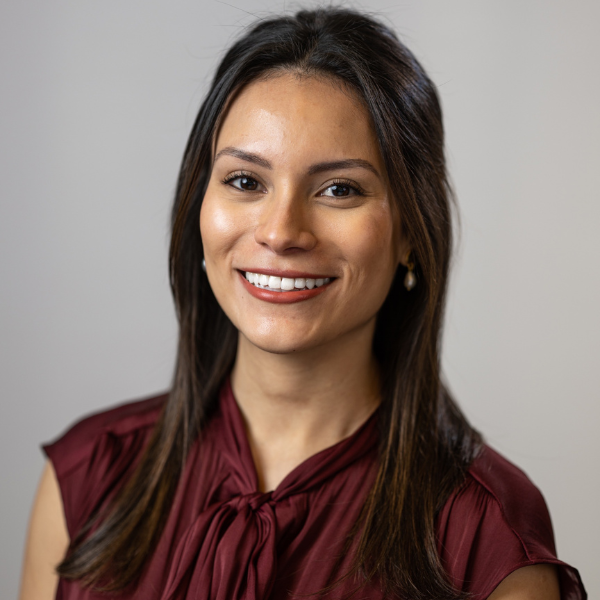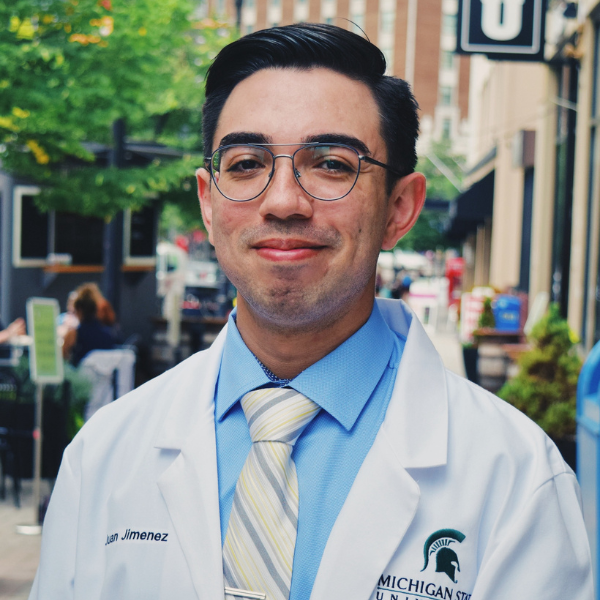Student View: Understanding the Power of Harm Reduction Strategies
February 17, 2025
 Andrea Ramirez is a third-year student at Michigan State University College of Human Medicine. As part of the Leadership in Medicine for the Underserved program, she recently completed an elective at Wellness Services in Flint, where she spent time learning about specialty HIV care and syringe service programs, and assisted staff in creating and distributing harm reduction kits for clients.
Andrea Ramirez is a third-year student at Michigan State University College of Human Medicine. As part of the Leadership in Medicine for the Underserved program, she recently completed an elective at Wellness Services in Flint, where she spent time learning about specialty HIV care and syringe service programs, and assisted staff in creating and distributing harm reduction kits for clients.
As humans, we naturally gravitate towards those who look familiar to us. As a Latina immigrant, my career in medicine was motivated by my desire to help others with a particular interest in patients whose life challenges I could relate to. However, when I met many of my classmates at MSU College of Human Medicine, I was impressed by their stories and their motivation for pursuing careers in medicine. I was reminded that the lived experiences and challenges of others are also important for me to understand in order to be a good physician. Understanding the perspective of others is key to harboring empathy and growth in diverse communities. Since then, I decided that I would take part in as many opportunities to learn about people with different experiences from mine in order to expand my worldview. This is how I landed at the doors of Wellness AIDS Services through MSU’s Leadership in Medicine for the Underserved Program.
From day one, my classmates and I were welcomed with open arms by staff that were excited to share their knowledge with us. Their passion for their work and the fulfillment it brought them were evident in their gratitude for our time and the stories they shared with us. They emphasized that, through this program, they positively influenced the lives of others and established trust with members of the Flint community who benefit from this program’s resources. This trust has allowed them to learn about the context in which individuals are at risk of contracting blood-borne illnesses, experiencing drug overdoses, and other urgent health problems. This information is valuable to health care providers and community leaders because it guides the implementation of harm reduction interventions that help individuals navigate life with HIV, recover from substance use disorders, and reduce complications from these health problems, most notably drug overdoses.
The opioid epidemic has recently gathered attention as a central issue in this year’s presidential debate. In past conversations about this topic, I heard things like “needle exchange programs are a waste of resources and taxpayer money” and “people with addiction problems should pull themselves up by their bootstraps if they want to get better.” Previously, I never felt confident speaking on this topic because it was not familiar to me beyond what was taught in medical courses - risk factors for substance use disorder and exposure to bloodborne pathogens, along with the general approaches for treatment. I didn’t personally know anyone who had been affected by it, though I have met several patients who have confided in me that they grieved the loss of loved ones due to opioid overdoses. However, after spending time at the Wellness AIDS Services, I want people to know there is a method to the “madness” of this very necessary program.
While working at the Wellness AIDS Services, I realized that telling someone to “just quit” is a huge oversimplification and a nearly impossible task. Proposing to use government measures to cut off the supply of opioids will not be the change that mitigates our opioid epidemic. Substance use disorder is an extremely complex condition that affects people from all walks of life. I met people who wore button-up shirts and drove nice cars while others did not have a place to sleep that night. I met people who stopped by after work with boots on their feet and paint on their jeans. I met people carrying large bags because they took a bus for multiple hours to come to this organization. There were people that made me think “I would have never known that they are facing this challenge” as I checked my own biases and assumptions.
In the time that people walked into the facility to safely dispose of biohazardous waste, I also saw them take brochures with information about ways to fight substance use disorder. Of course, people genuinely want to get better regardless of the availability of opioids around them. The problem is that the road to getting better is usually not a linear path. There are all kinds of bumps and loops in the road. This should point us, instead, to an alternative approach for Michigan to fight the opioid crisis. This community-driven and evidence-based approach is through the expansion of Wellness AIDS Services beyond the city of Flint.
Additional funding and decriminalization of syringes and other equipment provided by public health programs can help other Michigan communities struggling with high rates of overdose and drug-related healthcare expenditures. Further research in specific geographic areas and availability of local support can help promote harm-reduction approaches that can be tailored to the individual needs of communities. Elevating discourse about substance use disorder as it pertains to opioids and IV drugs is also critical to debunking wrongful assumptions that we, humans, naturally make as we try to make sense of concepts and people who seem unfamiliar to us.
By: Andrea Ramirez
Read More Student Views![]()
Juan Jimenez reflects on his Leadership in Medicine for the Underserved elective experience and emphasizes the need for a shift in societal views on addiction and advocates for policy change. “We can no longer continue to push our most vulnerable neighbors into the shadows of shame and neglect. Addiction is not won by denial and castigation, but rather via collective responsibility and empathy.”


